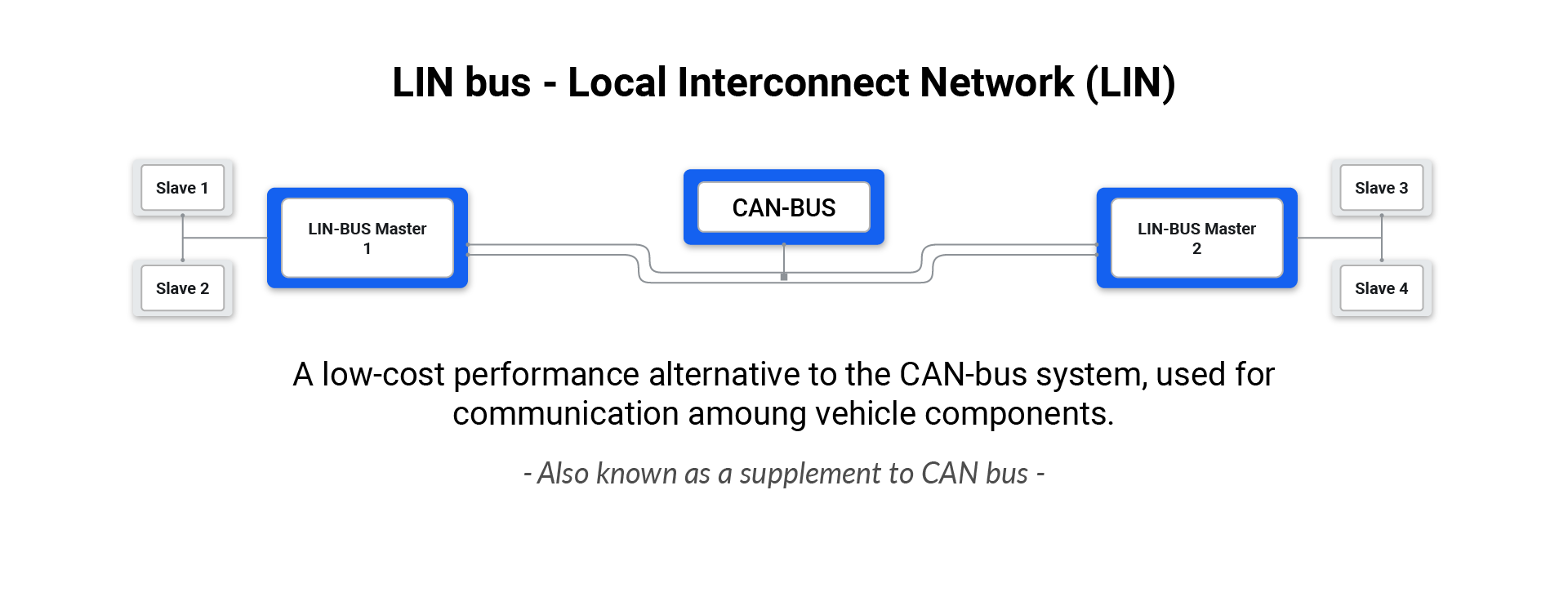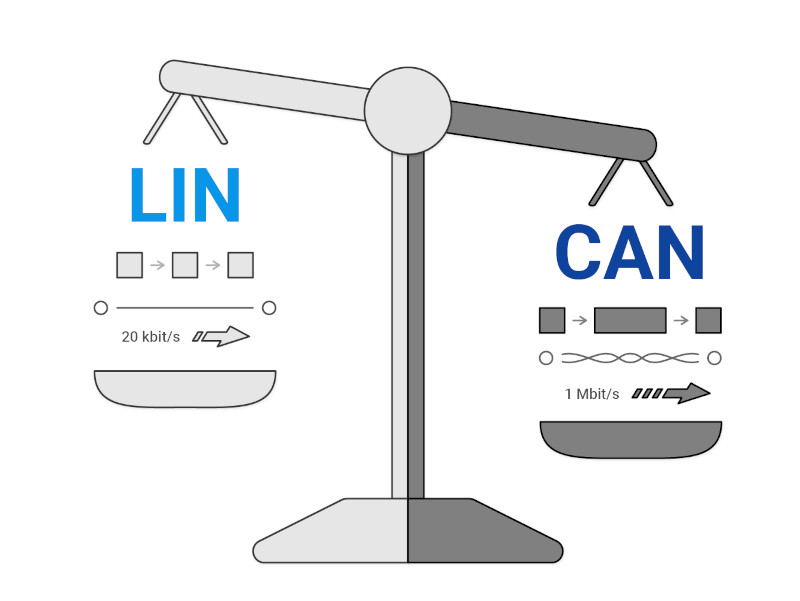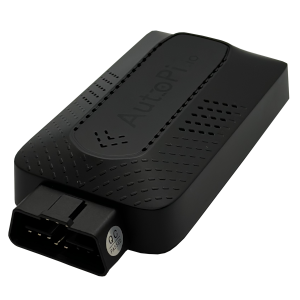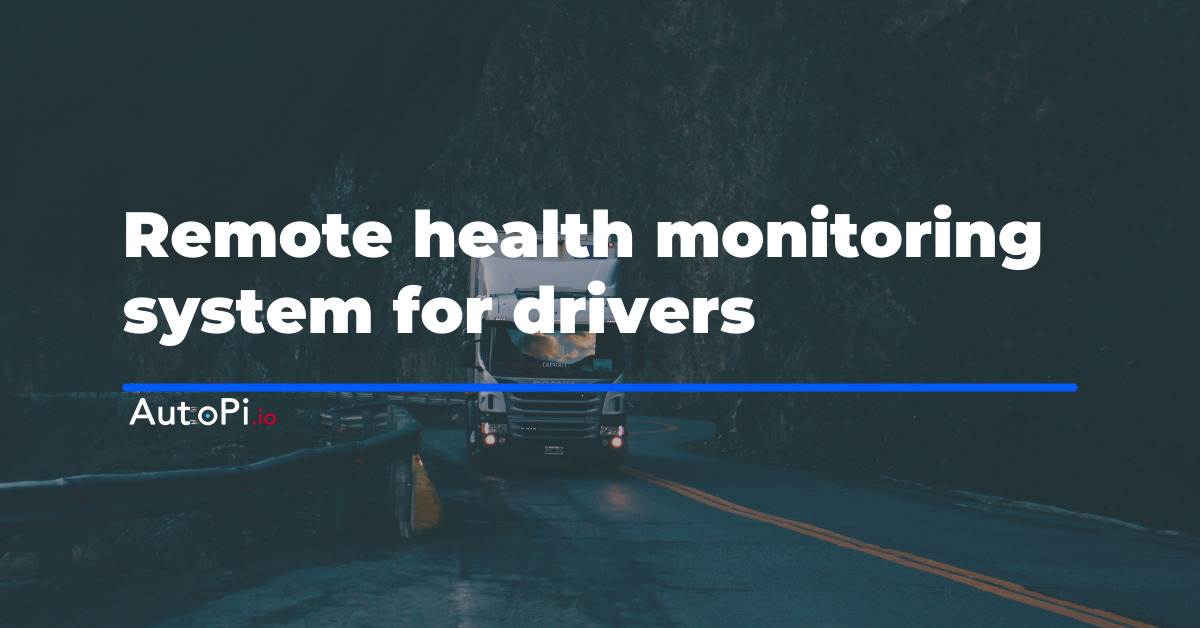Curious about how cars communicate internally? You've come to the right place!
I'm Tony Do, the digital marketing manager at AutoPi. While I might not have a technical background, that's exactly the point—this guide is designed to make the LIN bus technology accessible for everyone, regardless of their technical expertise.
With the support of our brilliant technical team, we’ll break down complex concepts into simple, easy-to-understand insights. Whether you're a complete beginner or have some experience, this guide is for you.
Let's get started!
What is LIN Bus?
In simple terms, a LIN (Local Interconnect Network) bus is a communication system used in vehicles to connect various components.
Imagine it as a conversation line between different parts of your car, like the windows, seats, and even the lights, allowing them to work together smoothly without requiring complex and expensive wiring.
For more on its high-speed counterpart, check out our guide on CAN bus.

LIN technology was developed to address the need for a cost-effective and reliable communication network within vehicles. Introduced in the late 1990s, LIN was designed to complement the more complex CAN bus system. While CAN handles high-speed and critical functions, LIN is perfect for simpler, slower tasks.
|
Feature
|
LIN 1.3
|
LIN 2.0
|
LIN 2.1 and beyond
|
|---|---|---|---|
| Release Year | Late 1990s | 2003 | 2006 (for LINK 2.1) and 2010 (for LIN 2.2A) |
| Data Transmission Speed | Up to 20 kbps | Up to 20 kbps | Up to 20 kbps |
| Diagnostics | Basic | Enhanced | Further improved |
| Error Handling | Basic | Improved | Advanced |
| interoperability | Limited | Improved | High |
| Typical Applications | Basic controls (e.g., windows) | More complex systems (e.g., climate control) | Advanced controls (e.g., infotainment systems) |
Why is LIN bus so important in today’s cars? For starters, it simplifies the design and manufacturing process, which means lower production costs and, ultimately, more affordable vehicles for consumers. Additionally, LIN buses enhance the reliability and efficiency of automotive systems.
-
As Malte (CPO) puts it,
LIN bus made vehicle designs smarter and more efficient. Now, features that were once too pricey or tricky to add are totally doable.
By understanding the basics of LIN buses, you're well on your way to grasping how modern vehicles are becoming more efficient and reliable. Now, let’s dive deeper into how LIN buses actually work.
How Does LIN Bus Work?
The primary function of a LIN bus is to enable communication between various components in a vehicle without the need for complex and expensive wiring. Think of it as a network that connects all the small, non-critical systems in your car, allowing them to "talk" to each other efficiently.
This communication ensures that everything from your car’s interior lights to the climate control system works seamlessly.
LIN buses are used in many places within a vehicle, particularly for functions that don't require rapid communication. Here are some common examples:
-
Window Controls: LIN buses manage the opening and closing of windows, ensuring they operate smoothly.
-
Seat Adjustments: They allow for the precise adjustment of your car seats, helping you find that perfect driving position.
-
Climate Control: LIN buses control the climate system, ensuring you stay comfortable by adjusting fans, vents, and temperature settings.
-
Interior Lighting: They manage the interior lighting, from the dashboard to the reading lights, providing the right amount of light when needed.

Now, let’s get a bit technical, but don't worry, we'll keep it simple!
A LIN bus network typically consists of a master node and multiple slave nodes. Here’s how it works:
-
Master Node: The master node controls the communication on the bus. It sends out a header that includes the identifier of the message.
-
Slave Nodes: The slave nodes listen for the header from the master. When a slave node recognizes its identifier, it responds with the appropriate data.
-
Single-Wire Communication: LIN buses use a single wire for communication, which significantly reduces the complexity and cost of the wiring harness in vehicles.
Here’s a simple analogy: imagine the master node as a teacher and the slave nodes as students in a classroom. The teacher (master node) asks a question (sends a header), and the student who knows the answer (recognizes the identifier) responds.
-
When asked Malte (CPO) what he thinks of LIN bus, he said,
The beauty of the LIN bus system lies in its simplicity and efficiency. By using a single wire for communication and a straightforward master-slave architecture, it significantly reduces the wiring complexity and cost, making it ideal for non-critical systems in vehicles.
Understanding how the LIN bus functions gives you a clearer picture of its role in modern automotive systems. Next, we'll explore the different types of LIN bus systems and how they compare.
Different Types of LIN Bus Systems
In the LIN bus system, communication is structured around different types of frames. Each frame type serves a specific purpose and ensures efficient data transmission between the various components in a vehicle. Here are the six primary types of LIN frames:
-
Unconditional Frames: These frames are sent at predetermined intervals regardless of the system state. They ensure that essential data is consistently updated across the network.
-
Event Trigger Frames: These frames are only sent when a specific event occurs. This allows for efficient use of the network bandwidth, as data is transmitted only when necessary.
-
Sporadic Frames: Similar to event-trigger frames, sporadic frames are sent when needed but are typically used for less critical data. They help in managing network load effectively.
-
Diagnostic Frames: These frames are used for diagnostic purposes, allowing the system to check and report the status of various components. They play a crucial role in maintaining the health of the vehicle’s network.
-
User Defined Frames: As the name suggests, these frames are defined by the user for specific applications that are not covered by the standard frame types.
-
Reserved Frames: These are reserved for future use or specific applications as defined by the LIN consortium, ensuring flexibility and scalability of the LIN bus system.
To help you understand the differences between these frame types, here’s a comparison table highlighting their key features and applications:
|
Frame Type
|
Purpose
|
Frequency of Transmission
|
Typical Applications
|
ID (dec)
|
ID (hex)
|
|---|---|---|---|---|---|
| Unconditional Frames | Regular updates regardless of events | Periodic | Essential Data (e.g., sensor readings) | 0-59 | 0x00-0x3B |
| Event Trigger Frames | Data transmission triggered by specific events | As needed | Event-driven systems (e.g., door status) | 60 | 0x3C |
| Sporadic Frames | Transmission of non-critical data when needed | As needed | Less critical data (e.g., user inputs) | 61 | 0x3D |
| Diagnostic Frames | System diagnostics and status reporting | As needed | System health monitoring | 62 | 0x3E |
| User Defined Frames | Custom applications defined by the user | As defined | Specific use-cases | 63 | 0x3F |
| Reserved Frames | Reserved for future or specific defined applications | As needed | Flexibility for future use | 64-255 | 0x40-0xFF |
To make this more tangible, let's look at some practical examples of how these frames are used in real-world automotive applications:
-
Unconditional Frames: Imagine the continuous monitoring of your car’s engine temperature. Unconditional frames ensure that this critical data is always up-to-date, helping to prevent overheating.
-
Event Trigger Frames: Consider the automatic door locks that engage when your car starts moving. Event trigger frames handle this by sending the appropriate command only when the vehicle begins to move.
-
Sporadic Frames: Think about adjusting your seat position. Sporadic frames send the necessary data only when you press the adjustment button, reducing unnecessary network traffic.
-
Diagnostic Frames: During a routine vehicle check-up, diagnostic frames report the health and status of various systems to the onboard diagnostic tool, ensuring everything is functioning correctly.
-
User Defined Frames: Custom applications, such as personalized infotainment settings, utilize user defined frames to cater to specific user preferences.
-
Reserved Frames: These frames might be used for future enhancements or new features that manufacturers plan to introduce, ensuring the system remains flexible and upgradable.
According to the LIN Consortium, each type of LIN frame plays a crucial role in the vehicle's communication network, ensuring efficient and reliable data transmission. Understanding these frames helps us appreciate the sophisticated design outlined in the LIN CIA standards, which ensures modern vehicles operate smoothly and effectively.
Exploring the different types of LIN frames gives you a deeper insight into the intricacies of automotive communication networks. Next, let's look into the benefits of using LIN buses in automotive systems.
The Benefits of Using LING Bus
One of the biggest perks of using LIN buses in vehicles is their efficiency and cost-effectiveness. LIN buses handle low-speed communication tasks, which means they don't need the complex and expensive setup that high-speed networks require. This simplicity translates into significant cost savings for manufacturers, as fewer wires and simpler components are needed.
Plus, the streamlined design of LIN buses reduces the overall weight of the vehicle, which can improve fuel efficiency. By efficiently managing communication between various non-critical systems, LIN buses help make cars more affordable and environmentally friendly.
LIN buses are also known for their reliability. Their straightforward architecture means there are fewer things that can go wrong, ensuring consistent performance even in tough conditions. The master-slave setup of LIN buses allows for reliable communication without the risk of data collisions, which is crucial for keeping everything running smoothly.
Another big advantage is scalability. LIN buses can easily be integrated into existing vehicle systems, making it possible to add new features without redoing the whole network. This flexibility is especially valuable as car technology evolves, allowing manufacturers to update vehicle systems efficiently.
LIN Bus vs. CAN Bus
While both LIN and CAN buses are used in cars, they have different strengths:

|
Feature
|
LIN Bus
|
CAN Bus
|
|---|---|---|
| Speed | Up to 20 kbps | Up to 1 Mbps |
| Complexity | Simple, single-wire communication | More complex, requiring two wires for differential signaling |
| Cost | Low-cost | Higher |
| Use Case | Non-critical, low-speed applications (e.g., window controls, seat adjustments) | Critical, high-speed applications (e.g., engine control, ABS) |
| Scalability | High, easy to integrate new features | Moderate, integration can be more complex |
| Reliability | High, minimal points of failure | Very high, robust error detection and handling |
In simple terms, LIN buses are great for applications where simplicity, cost-effectiveness, and reliability are important, while CAN buses are better for high-speed, critical tasks.

By using both LIN and CAN buses, car manufacturers can create an efficient communication network that meets the diverse needs of modern vehicles.
LIN Bus Voltage Basics
Let's talk about voltage levels in LIN bus systems. LIN buses typically operate at standard voltage levels to ensure smooth communication between the various components. The standard voltage for LIN bus systems is usually around 12 volts, which is common in most automotive electrical systems. This standardization helps in maintaining compatibility and reliability across different vehicle models and components.
Maintaining the correct voltage levels is crucial for the performance of LIN bus systems:
-
Low Voltage Issues: Can lead to unreliable communication, errors, and malfunctions.
-
High Voltage Issues: Could damage components and cause failures.
Keeping the voltage within the specified range ensures that the LIN bus system operates efficiently and reliably.
Typical Operating Voltage Range
The typical operating voltage range for LIN bus systems is between 9 and 16 volts. This range accommodates fluctuations that might occur in a vehicle's electrical system, ensuring that the LIN bus can still function correctly even if the battery voltage varies due to different operating conditions.
Voltage variations can significantly affect LIN bus systems:
-
Low Voltage: Communication becomes erratic, leading to data transmission errors and issues like delayed responses or incorrect actions.
-
High Voltage: Can cause overheating or permanent damage to electronic components connected to the LIN bus.
To manage voltage variations and ensure optimal performance:
-
Voltage Regulators: Use devices to maintain a stable voltage level within the acceptable range.
-
Protection Circuits: Implement circuits that protect the LIN bus system from fluctuations.
-
Regular Maintenance: Regularly check the vehicle's electrical system to identify and address any voltage-related issues.
Advanced Topics of LIN Bus
Let's get a bit technical in this section. We'll dive deeper into some advanced aspects of the LIN bus, but don't worry—we'll keep it simple and straightforward.
LIN Frame Format
LIN frames are the building blocks of communication in a LIN bus system. Each frame consists of:
-
Header: Sent by the master node and includes:
-
Sync Break: Indicates the start of a new frame.
-
Sync Field: Used to synchronize the baud rate.
-
Identifier: Specifies the purpose of the frame and which slave node should respond.
-
-
Response: Sent by the slave node and includes:
-
Data: Up to 8 bytes of data.
-
Checksum: Ensures the data integrity.
-
This structure ensures efficient and reliable data transmission across the network.

LIN Bus Timing
Timing is crucial in a LIN bus system to maintain synchronization between the master and slave nodes. Here's how it works:
-
Sync Field: The master node sends a sync field at the beginning of each frame to synchronize the baud rate.
-
Inter-Frame Space: A minimum gap between consecutive frames to ensure nodes have enough time to process data.
-
Response Time: The time allowed for a slave node to respond after receiving the header.
By maintaining precise timing, LIN buses ensure smooth and accurate communication between nodes.
LIN Topology and Behavior
The typical network topology of a LIN bus is a single master with multiple slave nodes. Here's how they interact:
-
Master Node: Controls the communication, sending headers to initiate data exchanges.
-
Slave Nodes: Respond to the master's headers with the appropriate data.
This master-slave configuration simplifies the network and ensures reliable communication. Nodes typically remain in a listening state until addressed by the master, making the system efficient and easy to manage.
LIN Error Detection and Confinement
Even in robust systems, errors can occur. LIN buses have mechanisms to detect and handle these errors:
-
Checksum: Each frame includes a checksum that verifies the integrity of the data.
-
Error Flags: Nodes can set error flags if they detect inconsistencies or communication issues.
-
Self-Diagnosis: Nodes can perform self-diagnosis and report their status to the master node.
-
These mechanisms ensure that errors are quickly detected and confined, preventing them from disrupting the entire network.
LIN Sleep and Wakeup
Power management is essential in automotive systems. LIN buses manage power efficiently through sleep and wake-up processes:
-
Sleep Mode: When the bus is inactive, nodes can enter a low-power sleep mode to conserve energy.
-
Wakeup Signal: The master node can send a wakeup signal to reactivate the bus and bring nodes back online.
This efficient power management helps reduce the overall energy consumption of the vehicle, contributing to better fuel efficiency and longer battery life.
By understanding these advanced topics, you can appreciate the sophisticated yet accessible design of LIN bus systems. These features, combined with what we've discussed earlier—such as the various frame types and the importance of voltage levels—show how LIN buses are tailored to meet the demands of modern automotive technology.
Conclusion
We've explored the key aspects of LIN bus voltage and its crucial role in enhancing modern vehicle designs, making them smarter and more efficient.
If you're intrigued by LIN technology, there's a whole world of automotive innovations waiting for you to discover. Keep learning and stay ahead in this exciting field.
For more insights and detailed information, feel free to contact us or check out our additional resources similar to this topic.





